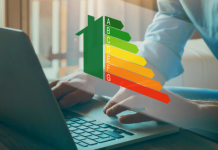The first instalment of a two-part article in which Vilnis Vesma discusses the hallmarks of bogus energy-saving products and how to deal with their pushy salesmen.
Some energy-saving products and techniques always work: fitting a properly sized, high-efficiency electric motor, for example. Some, like condensing boilers and voltage reduction, only work in the right circumstances. Some will work only if properly commissioned and operated (automatic lighting controls are a case in point). Some products, like those based on automatic control algorithms, may be perfectly good from some vendors but not others. Certain products, however, will never save energy under any circumstances because they are bogus. The Advertising Standards Authority ruled last year, for instance, that Blue Carbon Ltd must not claim that its “current optimisation” device saves energy, because its claims could not be substantiated.
But how is the hard-pressed environmental manager, facilities manager or works engineer, who may have little grounding in the subject, going to make the judgment about something which just feels wrong?
There are perhaps 10 hallmarks of a suspicious product. Apart from bad science (which can be difficult for the lay person to judge), no single factor will definitively identify a bogus offering, and some (like ease of installation, testimonials, and high percentage savings) could be perfectly genuine. But if four or more of the following apply, there may well be a problem. Here are the first five:
1 Failure to adhere to the known laws of science A sure sign, and pseudo-scientific jargon should raise suspicion. Usually spurious claims can be debunked with basic school science, but not many people will remember their physics and chemistry lessons all that clearly in later life and most will just be left with that vague feeling that the claims sound wrong. Help may be needed from a trustworthy source like the UK Association of Energy Engineers, which operates an “Ask the Expert” service for its members, and is free to join.
Technical inconsistencies may give the game away (the ASA’s ruling on Blue Carbon’s advertising drew attention to contradictory assertions in relation to magnetic fields). And the vendor may inadvertently tip you off: one stated on his web site that his invention was not a perpetual-motion machine. Why would he need to say that?
2 Implausible percentage savings claims Some technologies genuinely can yield 20% savings or more, so what is really at issue is the nagging question: “If this is so good, why isn’t it fitted everywhere?” Taken on its own, a high claim is not evidence enough, although it is sometimes possible to show from engineering calculations that a claim is unlikely to be feasible.
3 Extreme ease of installation It has to be just a simple additive, bolt-on, or electrical connection for two reasons. First, the salesman needs to put as few obstacles in your way as possible. Second, it needs to be cheap for him to install and easy to remove (or abandon) when a diligent customer discovers it does not work.
4 Being dismissive of established test methods or expertise Snake-oil merchants sometimes rubbish conventional wisdom, and when I argue with them, they point out that scientific knowledge is always advancing, that people once thought the earth was flat, etc., etc.. But however novel a product may be, its effect on losses and efficiency will be indistinguishable in kind from other products that achieve the same thing. In general, if a product gives poor or no results with realistic tests, it will give poor or no results when installed. One web site said this about people who questioned the technical basis of their claims: “They are wrong because they do not have the knowledge and technology we do”. A compelling argument indeed.
5 Analysis based on indirect measurements like reduced running hours It is not safe to infer that reducing running hours reduces energy consumption. If you turn your heating off for 10 minutes in every hour, for example, you will have an intermittent drop in space temperature and each time the heating system runs it will use extra fuel to restore the desired temperature. Remember in this case that heat is flowing out of the building all the time (even when the heating is off) and over the course of a day or a week, all the heat lost must be balanced by heat input, regardless of how intermittently it is supplied. In fact, to maintain the same minimum inside temperature with intermittent heat input, you would use more fuel by having to maintain a higher average.
Similar considerations apply to voltage reduction, in that any reduction in current, while proving a reduction in instantaneous power, does not take running hours into account. A thermostatically-controlled electric heater in particular will run for longer in order to deliver the required quantity of heat, negating any apparent savings inferred from a spot check. According to the ASA adjudication, Blue Carbon had its product tested in Austria using a method based upon the time taken to boil water. Really? One has to wonder why. Be skeptical of any proposal which seems to dodge the more direct and rigorous option of measuring total energy consumption before and after installation.
Next time…
The other five hallmarks that Vilnis Vesma will cover in greater depth in the next article are:
- Secret ingredients or principles of operation
- Reliance on being patented as proof of effectiveness
- Heavy reliance on testimonials
- Literature plastered with ISO9001 and other certification logos
- Dense academic research reports
He will also provide some guidance on how to make fraudsters go away, though sadly we will never be totally rid of them.




